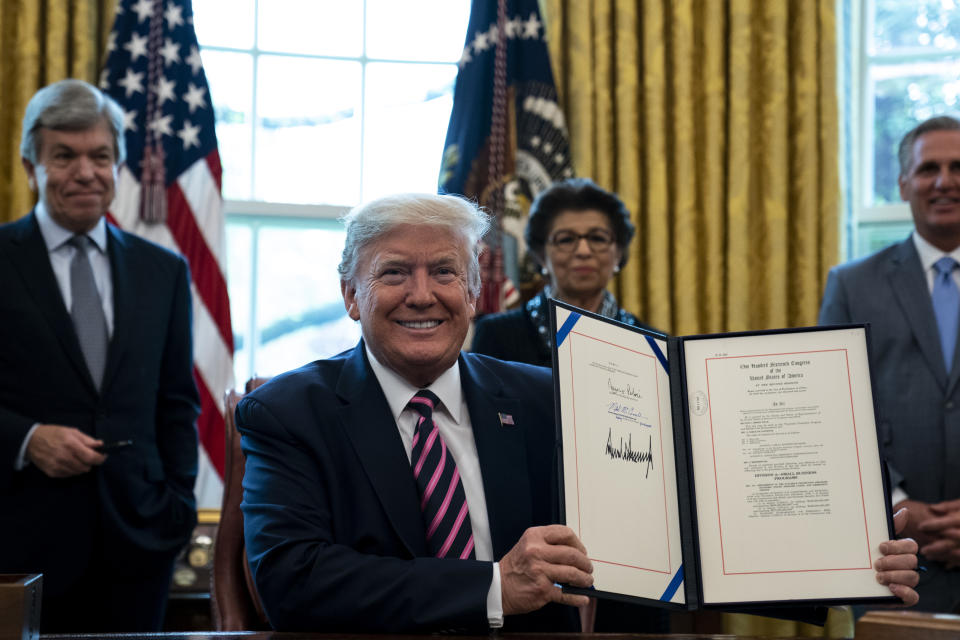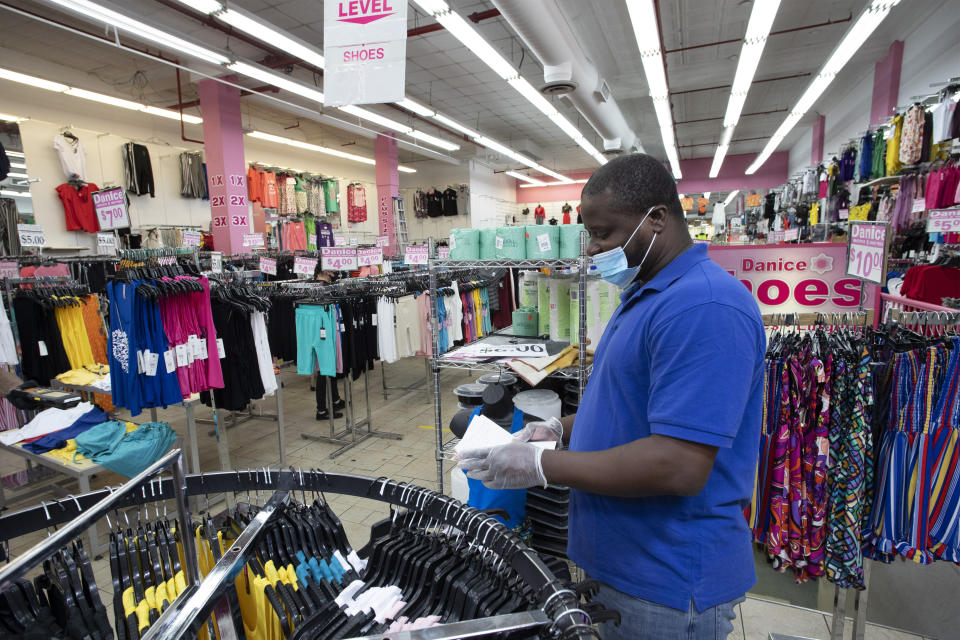House report: Treasury Dept. encouraged banks to prioritize existing clients for PPP loans
The Treasury Department encouraged banks to prioritize existing clients when issuing Paycheck Protection Program loans — which put the neediest small businesses at a disadvantage, according to a new report from a House panel.
The Select Subcommittee on the Coronavirus Crisis, led by Democrats, released the report on Friday after a months-long investigation. Earlier this year, the panel raised concerns about billions of dollars in questionable PPP loans.
The subcommittee said it found documents that showed Treasury privately told lenders to prioritize existing clients for PPP Loans. A day after President Trump signed the CARES Act into law, the head of the American Bankers Association, Rob Nichols, said in an email that “Treasury would like for banks to go to their existing customer base as lenders will have all the business information (payroll, etc). This will allow loans to move quickly. ”
JPMorgan (JPM) told the subcommittee staff that “from early on there was an understanding from Treasury that banks were working with existing clients.” The report says Treasury denied the existence of an “understanding” and told subcommittee staff they “never addressed anything about lenders prioritizing existing customers.”
“Small businesses that were truly in need of financial support during the economic crisis often faced longer waits and more obstacles to receiving PPP funding than larger, wealthier companies,” said the report.
In a statement to Yahoo Finance, Nichols said the report doesn’t capture a “full and complete picture of the PPP program and the banking industry's significant efforts to make it a success.”
Nichols said the administration encouraged banks to process loans as quickly as possible — and to do that, many banks processed applications for existing customers first since they already had the borrower information to meet regulatory requirements.
“As a result of this immediate action by the banking industry, thousands of small businesses from every region of the country were able to keep their businesses open and continue paying their employees. Over time, as the Treasury and SBA provided more clarity, it became easier to gather information to process new customers in this new program,” said Nichols.
The report also found that the Small Business Administration and Treasury did not issue any “meaningful guidance” to banks to prioritize underserved markets, such as minority-owned and women-owned businesses.

Problems with PPP
The Paycheck Protection Program faced a wave of criticism after the first round of funding quickly ran out and high-profile, large companies were found to have received PPP loans — though many of them returned the money.
Lawmakers have repeatedly raised concerns about the disproportionate impact of COVID-19 on minority business owners and their struggle to gain equal access to PPP loans. In August, a Federal Reserve report found areas with high numbers of Black-owned businesses may have received fewer PPP loans because of weaker ties to financial institutions.
“The Administration’s implementation failures had consequences,” said the report.
The report also found that some lenders processed bigger PPP loans faster. JPMorgan processed loans more than $5 million almost four times faster than loans less than $1 million, according to the report. The subcommittee said PNC and Truist processed their largest loans at about twice the speed of the smallest loans. Businesses with more than 100 employees received their loans from those three lenders 70% faster than businesses with 5 or fewer employees.
In a statement, PNC said the vast majority of applications it registered were from clients with less than $5 million in annual revenues and 80% of its funded loans were for $150,000 or less with approximately 44% for $25,000 or loess.
“PNC also took special care to help ensure that applications from small businesses located in LMI communities and non-profits were not left behind, as we recognize that those businesses and communities face special challenges and that non-profits often support vulnerable communities,” said a PNC spokesperson in an email.
Truist told Yahoo finance 92% of its PPP loans went to companies with fewer than 50 employees and all of its applications were handled through a single application portal made available to clients on a first-come, first-served basis “without any preference given to larger or more affluent clients.”
“It’s also worth noting that approximately 27% of our PPP loans went to borrowers in majority-minority neighborhoods across our markets, which demonstrates our commitment to serving all demographics in our communities,” said Kyle Tarrance, a Truist spokesperson, in an email.
Richard Hunt, CEO of the Consumer Bankers Association, said the report highlights “issues directly related to the way they [members of Congress] structured the program.” Hunt pointed to the average PPP loan size of $101,000 as proof banks reached the neediest businesses.

“At the end of the day, the goal was to get assistance to as many small businesses and their employees as quickly as possible and the thousands of bankers working around the clock to make decades worth of loans in a matter of months are proud of the work they did and continue to do to help customers and support small businesses during this pandemic,” said Hunt in a statement.
In an emailed statement, a spokesperson for Republicans on the subcommittee did not address the contents of the report, but bashed Democrats for not extending the Paycheck Protection Program.
“Millions of Americans’ jobs are on the line, but Democrats continue to play politics with their livelihoods,” said the spokesperson.
Majority Leader Mitch McConnell has said he plans to bring up a narrow relief bill next week, which would include new funding for the small business aid program.
Yahoo Finance reached out to the Treasury Department, JPMorgan Chase, PNC and Truist for comment. This story will be updated with their responses.
Jessica Smith is a reporter for Yahoo Finance based in Washington, D.C. Follow her on Twitter at @JessicaASmith8.
Read more:
Coronavirus stimulus: Democratic congresswoman says Mnuchin's $1.8T offer would bring relief
Congressman: Some US-China decoupling will be necessary no matter who wins election
CEO optimism improves in Q3, but remains well below historical average: survey
Coronavirus stimulus: Sen. Wyden blasts GOP skinny bill and 'show trial' vote
